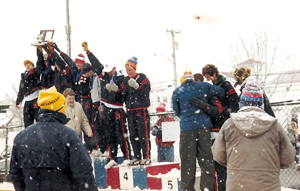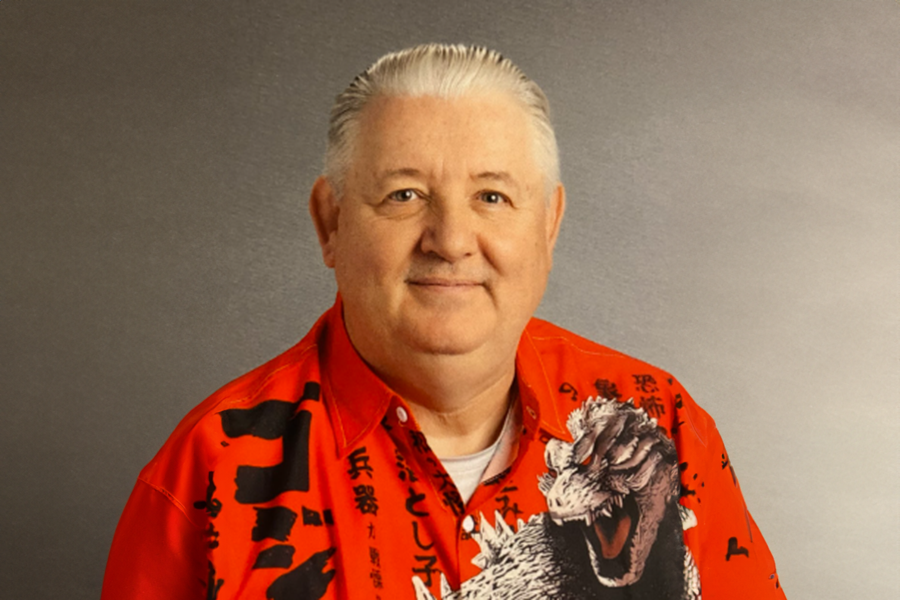You’ve seen them in the commons: the numerous banners, some seemingly ancient, that rattle off South’s statewide achievements. Strangely enough, if you look closely, the last state championship South won was in 1991 in men’s cross country, and that is one of the rare championships from the past 60 years. What happened that made these championships teams so good, and what has changed?
“The reporters always used to say that you had to find out how tough South was going to be before anything else,” Laurie Balzer, a receiver on South’s 1947 football team said of the years he spent playing football at South.
Balzer played through one of South’s highest achieving times, in the 1930s and 40s. At that time, South’s head coach was Les Barnard. Many may recognize his name from South’s football field, Les Barnard field, which was named after him. Barnard’s legacy is obvious among the championship banners at South, as he coached South to eight victories throughout the late 20s, 30s, and 40s, and South played in the championship game almost every year in the 30s and 40s.
“It all goes back to Barnard.” Balzer attributes Barnard’s coaching, more than anything else, to the success of his team’s state championship. “He knew what he was doing… everyone respected the guy [and] he was tough,” Balzer continued.
“[Succeeding] wouldn’t have been possible without really, really good coaches” explained Gaio Lakin. Lakin was a cross country runner in three of South’s state championship teams, from 1988 to 1990. “It was just so exciting for all of us. I think it was fair to say it was the main thing any of us on the team thought about…almost everything we thought and talked about was related to it. It was so much fun,” Lakin said.
Lakin’s coaches, Craig Canham and Warren Kaari, did things a little differently. “One thing that our coaches did that was really unusual, on races we wouldn’t even take our morning runs off.” The cross country coaches worked their teams hard, having the team run an average of 10 miles a day.
According to Tristan Fargione, a sophomore on this year’s cross country team, that’s a lot. Today, they usually run about 5 miles every day. “Even varsity never does 10 miles a day for practice. I’ve done it once, it almost killed me,” he explained.
The success of these former South teams stemmed from the unusual training of both Lakin’s and Balzer’s teams drew people in, helping both the teams to achieve even more. Both attribute this prominence of their respective sports to the success of their teams.
“Good athletes started to realize that cross country was, at the time, the best team in the school, and so a lot more people were coming out for cross country,” Lakin said.
“We used to draw 14,000-15,000 people [to the football games],” said Balzer. He played his football games at Nicollet Ballpark, which served chiefly as the home of the Minneapolis Millers, the Minneapolis minor league baseball team at the time. “There was a lot more cohesiveness, and there was a lot of neighborhood people that did go to the games.”
Balzer noticed a big contrast from when he played to when he coached South’s football team a few years ago. “[At halftime] almost half the kids in the stands would leave . . . whereas back then we were all in the neighborhood, and we all went together.” Balzer noticed that the neighborhoods today are a lot less united, and have been broken up.
This separation is due largely to the rapid growth of suburban schools. It is also one of the reasons it has become harder and harder for South to achieve anything. “All those people that are out [in the suburbs] now, they went to school probably in the cities here,” Balzer explained.
While South had a lot of good players to draw from in the 1930s and 1940s, soon after people began to move out to the suburbs. The population of Minneapolis began to decrease, while the suburban population sharply increased.
Suburban teams like Eden Prairie, a school in the region that has just started to win state championships in the past ten years, has relied on the suburb’s growth to excel. Eden Prairie High School has won 6 state football championships in the last 20 years, and at the same time, the suburb has grown by about 21,500 people.
As people were moving out to the suburbs, Minneapolis lost a large portion of their population. Minneapolis has lost about 140,000 people from what the population was in 1950. With that decrease in population, South’s sports achievements have decreased as well.
Schools like Edina and Wayzata, which have expanded hugely in the past 20 years, tend to win cross country state championships again and again. These schools are both in the same region as South’s cross country team.
Along with these large schools, South is in arguably the most competitive region in the state. In the past 10 years of cross country events, every single one has had at least one school from South’s region in the top five, usually two or more. “I’d like to call [our section] the state meet. It’s the best every year,” said Cross Country coach Mark Gross.
In fact, South’s region is so competitive, Lakin said “I know one year not too long ago, [South was] rated seventh in state and finished sixth in their region… I know the program is still a good program, but they’re in a region where even for really good teams, it’s really hard to qualify for the state meet.”
As it turns out, that success in sports might not all have to do with the skill of the team or coaches. There are numerous other factors, as Lakin and Balzer can attest to, that go into getting a championship. While South teams have continued to play well, for a variety of reasons, they can’t seem to compete with the growing teams around them. For this reason, the banners in the commons from past years remain, and new ones are slow to be put up.








